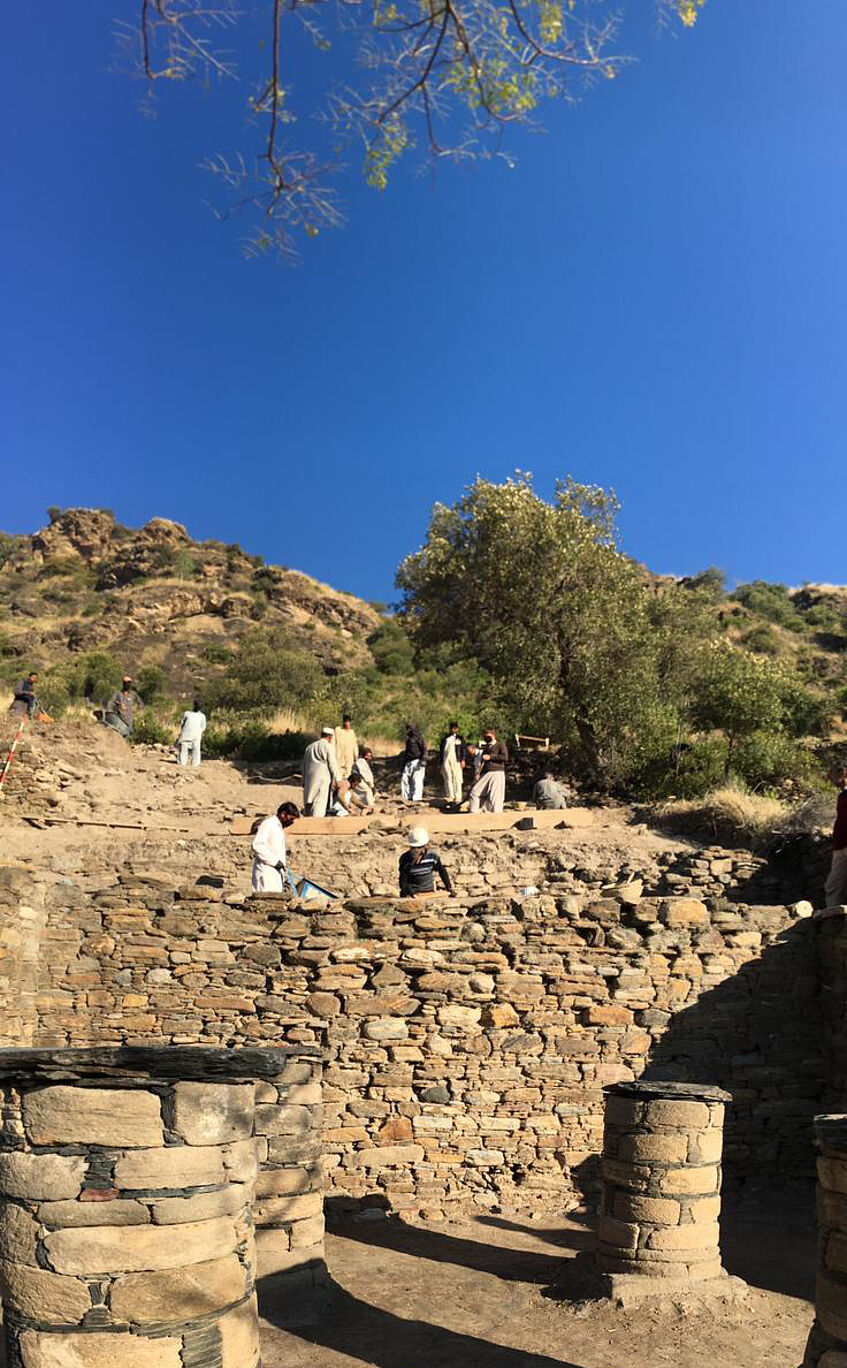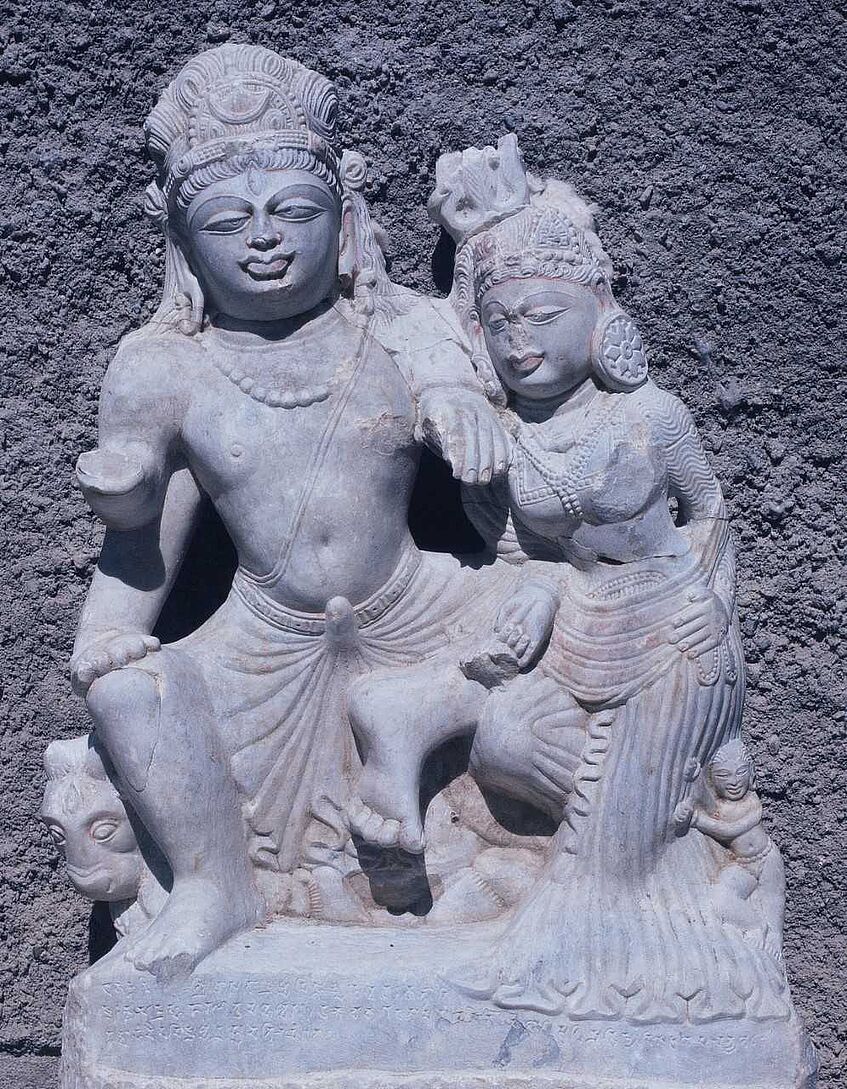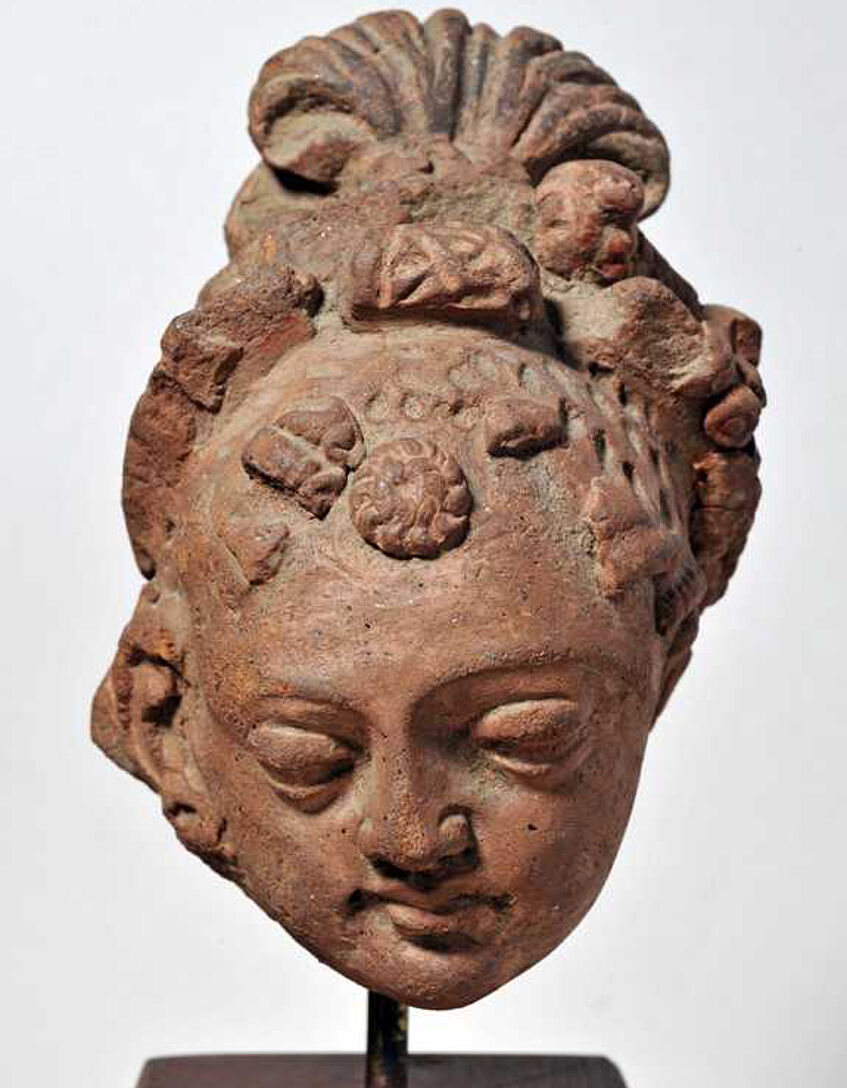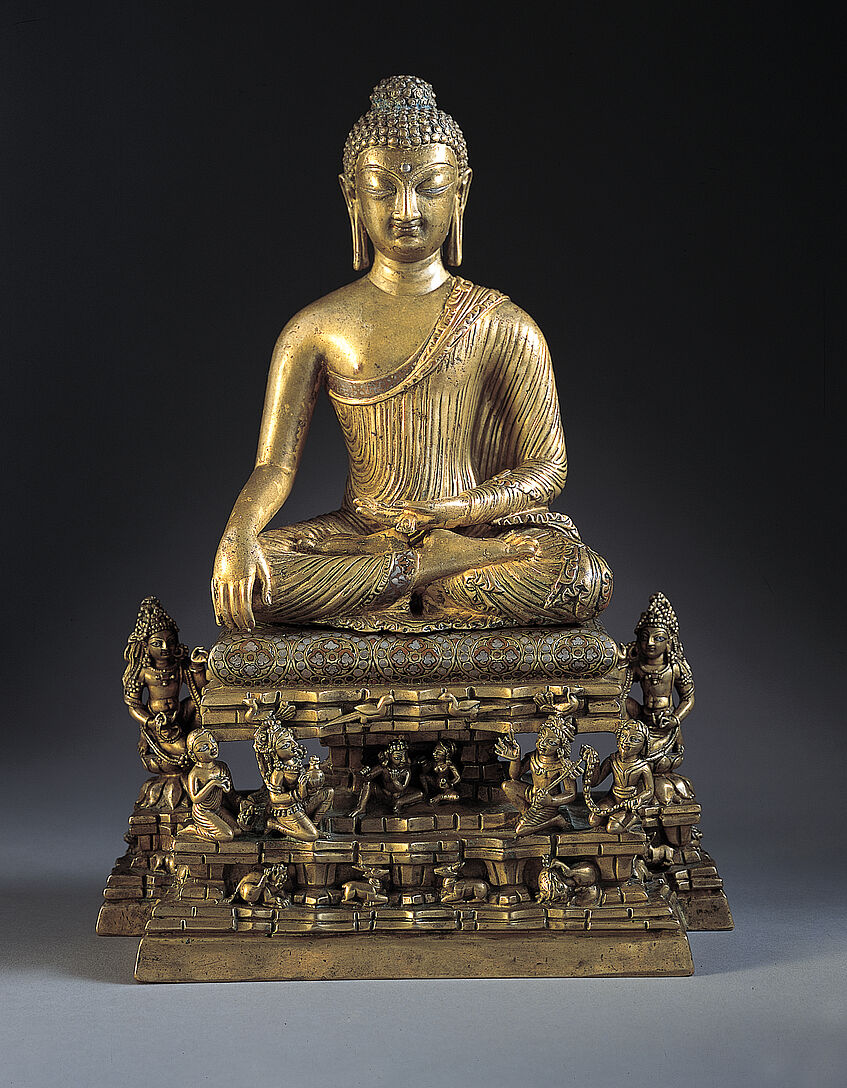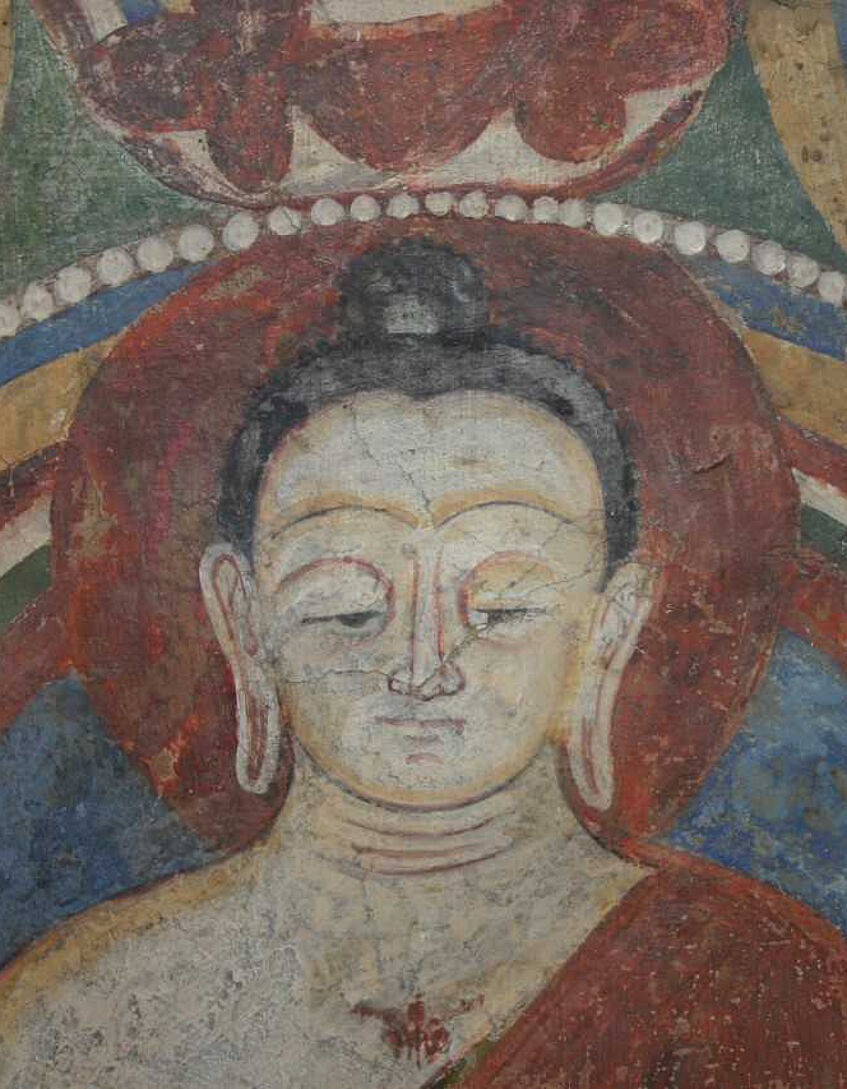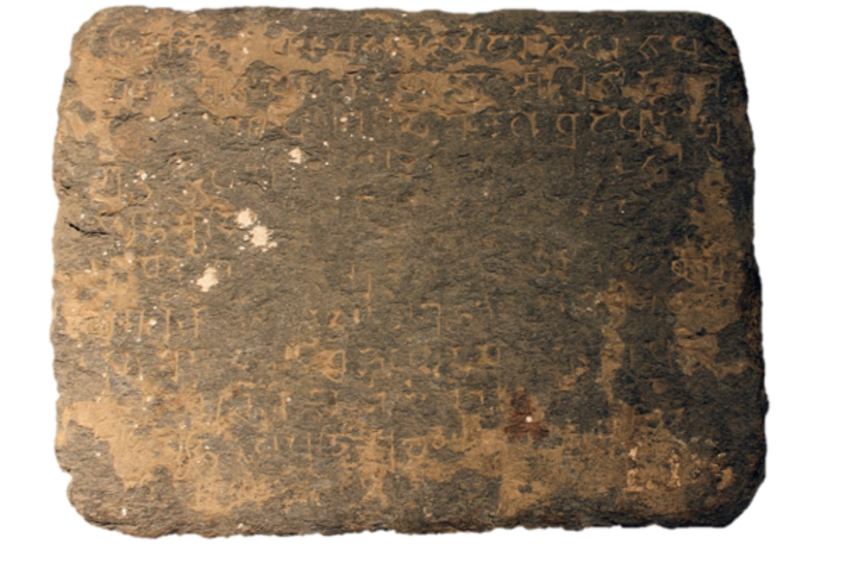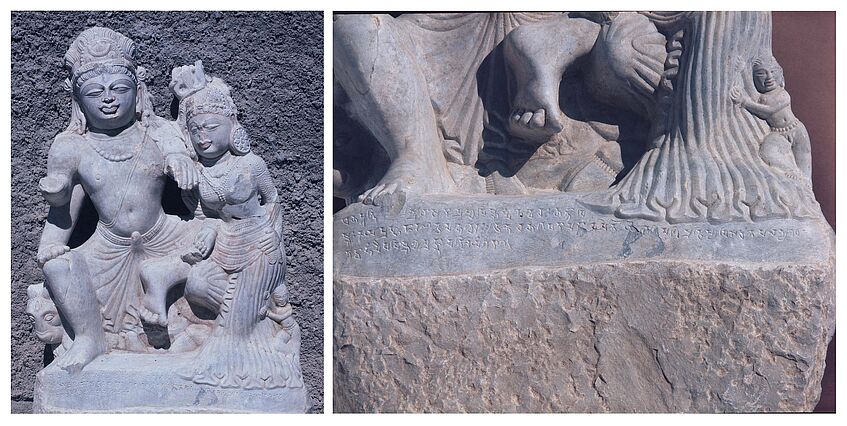Shahi Kingdoms Database
Shahi Kingdoms Database
The Shahi Kingdoms Database of visual and material culture includes known archaeological sites and objects that can be attributed to the Shahi period. The structure of the database is primarily geographical. All stationary objects have precise GPS coordinates and chronologies, where available. However, for the category of portable objects, the database is structured according to material. This corpus encompasses:
(1) Archaeological sites
1.a. Stationary structures (constructed; rock-carved)
1.b. Stationary objects (cult objects; architectural elements; architectural decoration [clay-based; painting])
(2) Portable objects
All objects have been determined to be authentic based on our criteria for identifying authentic objects (see “Categories of Authenticity” below).
2.a. Statues (metal; clay-based; stone; wood)
2.b. Coins and medals (see more below)
2.c. Jewelry
2.d. Utensils
Uma Maheshvara, Tepe Skandar, Afghanistan, excavated in Temple A, 7th century, H. 81.5 cm, Photo by courtesy of The Committee of the Kyoto University Scientific Mission to Central Asia (Institute for Research in Humanities, Kyoto University)
Head of a Buddhist devotee or bodhisattva, Ambaran (Akhnur), Historical Northwest India, c. 6th/7th century, Red clay, accidentally fired, 14 x 10 x 11.5 cm, Photo: © The Government Museum and Art Gallery, Chandigarh, 02961
Buddha Shakyamuni and Adorants on Mount Meru, Kashmir, India c. 700, Bronze with silver and copper inlay, 33.7 x 24.1 x 12.1 cm, Photo: © The Norton Simon Foundation
Coins and medals: The largest and most significant category of artifacts are the coins struck in various mints throughout the Shahi kingdoms. They provide the chronological and political framework for the Shahi period. With their images and inscriptions, they give insight into the self-concept of their issuers. In addition, the technical features of production have to be analyzed; this concerns the production of flans, dies, striking methods, metrology, and metal composition. The extremely rich deposits of copper (Mes Aynak) and silver (Panjshir) to which the Shahis had access constitute important resources for their coinage. However, especially in the early period of the Turk Shahis (7th to 8th century), access to silver must have been temporarily interrupted, because some issues show a considerable sign of debasement. Metal analyses will help to better understand this phenomenon. Furthermore, we have to analyze the circulation patterns. Some coins were only used locally, while others circulated far beyond the borders of their issuing authority. Unfortunately, most of the coins bear no mint signature and are not found in a documented archaeological context. However, recent excavations like Tepe Narenj, Qol-e Tut, Mes Aynak, Barikot, and others will help give a clearer picture. This concerns also the role of foreign money, like Sasanian drachms, Muslim dirhams and copper coins, which circulated within the Shahi kingdoms.
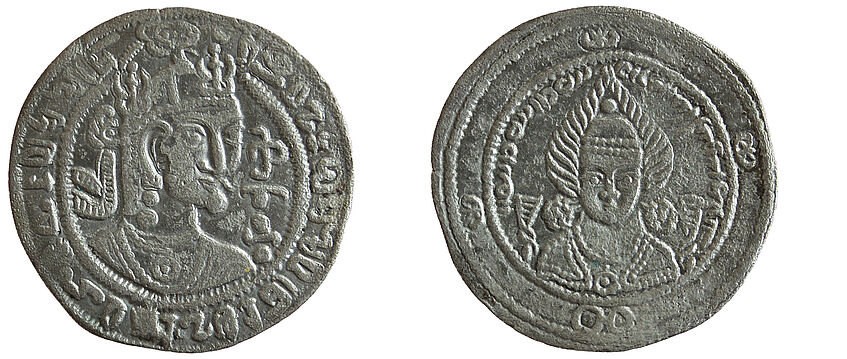
Chorasan Tegin Shah (after 680 – around 738 CE), Drachm (silver), minted in Kabulistan?, Photo after pro.geo.univie.ac.at/projects/khm/coins/coin105
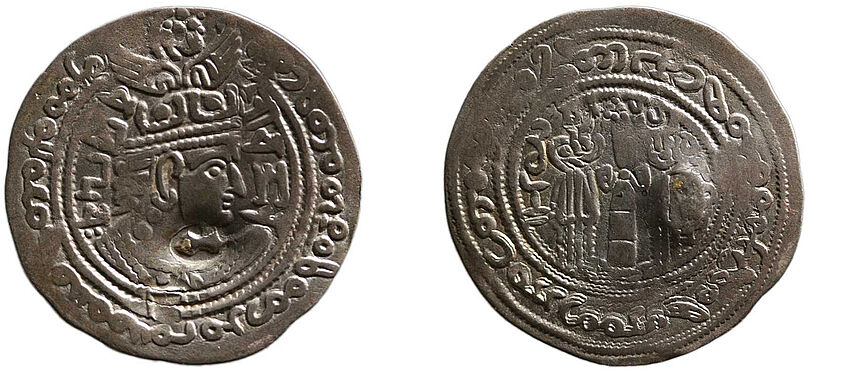
Sandan (First half of the 8th century), Drachm, minted in Zabulistan or Kabulistan, Kunsthistorisches Museum Wien, inv. no. GR 41709
(3) Information carrier
3.a. Inscriptions
Inscriptions that fit within the chronological and geographic parameters of the Shahi kingdoms offer a critical primary source for the region’s cultural history. The inscriptions will be contextualized to the degree possible.
A śāradā inscription from the important Shahi archaeological site Barikot (Vajirasthāna) in Swat, Pakistan.
The inscription mentions the Hindu Shahi king Jayapāladeva (r. c. 964-1002 CE) and the area where a Shahi temple with a water tank has been excavated.
Photo: after von Hinüber 2020 in Callieri and Olivieri 2020: 53, fig. 18; Courtesy Lahore Museum and ISMEO Italian Archaeological Mission in Pakistan (Photo by Cristiano Moscatelli)
Uma Maheshvara, Tepe Skandar, Afghanistan, excavated in Temple A, 7th century, Marble, H. 81.5 cm
A three-line inscription of 84 Brahmi letters (incl. punctuation marks), 5.8 cm x 43 cm (inscription only), located along upper part of the pedestal of the sculpture
Kuwayama (2002: 226-228) explains that ‘the inscription tells us that the name Śiva is given as Maheśvara and therefore the consort takes the name Uma.’
Photo by courtesy of The Committee of the Kyoto University Scientific Mission to Central Asia (Institute for Research in Humanities, Kyoto University).
Categories of Authenticity for Objects in the Shahi Kingdoms Database
Only objects that the art history team could unanimously categorize as authentic are included in the corpus of Shahi visual and material culture. Strict selection criteria have been used to assess the authenticity of each object. We defined three categories of authenticity. In the database, each object is identified as belonging to either category A or B. Category C objects are not included.
A Authentic objects with firm attribution
A1 Secure attribution: excavated objects from a trustworthy context
A2 Attributable with high confidence: objects with an early accession date (prior to WWI) in regional museums in Afghanistan, Pakistan, and India, as well as objects photographed in situ in monastic and temple treasuries in India; objects bearing inscriptions that indicate authenticity; objects for which objective technical analysis has been conducted that indicates authenticity.
B Apparently authentic objects without secure attribution
Objects in private and western museum collections without secure provenance, inscriptions, or objective technical analysis. Comparative art historical analysis suggests confidence in their authenticity.
C Insecure and fake objects
These objects are not included in the corpus. However, in our study of Shahi material culture they are used for comparison with apparently authentic objects in order to better understand the historiography of the field and the current market situation. We are aware that other art historians may come to different conclusions in some instances.
-> back

